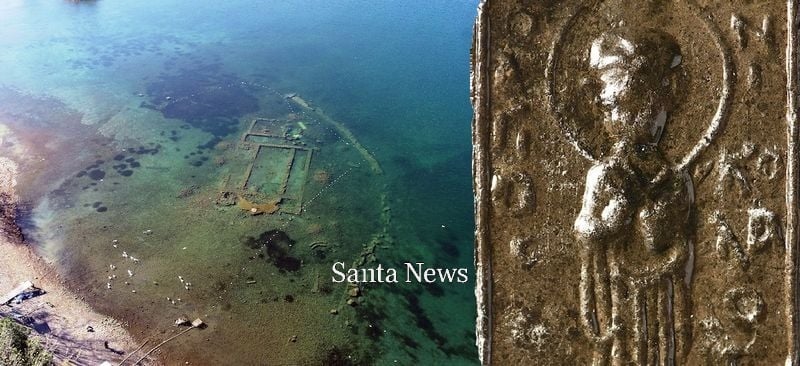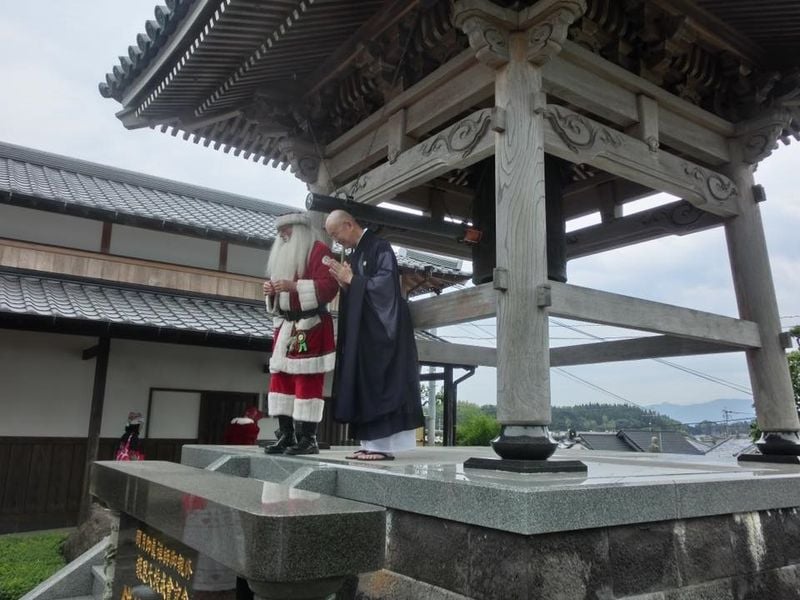SANTA CLAUS - ONLY HIS NAME HAS CHANGED IN 1700 YEARS!
안탈리아의 성 니콜라스, 즉 산타클로스는 325년에 니케아 공의회에 참석한 것으로 알려져 있습니다.
수백 년의 세월이 흘렀고, 최근 몇 년 동안(2022년) 이즈닉 호수 대성당에서 성 니콜라스의 비문과 부조가 새겨진 목걸이가 발견되었습니다.
산타클로스의 목걸이 발견
이즈닉 호수 대성당 수중 발굴 책임자인 무스타파 ş 아힌 교수는 발굴 현장 중앙에서 성 니콜라스의 목걸이가 발견되었다고 보고했습니다.
한쪽에는 '하기오스', 다른 한쪽에는 '니콜라스'라는 문구가 새겨진 이 유물은 이즈닉 박물관에 반환되었습니다.

기독교의 첫 만남의 장소인 이즈닉에서 발굴 작업 중 성 니콜라스 목걸이만 발견된 것은 성 니콜라스에 대한 존경의 표시로 해석할 수 있습니다.
니케아 공의회 기간 동안 미라의 성 니콜라스와 이집트의 아리우스 간의 논쟁 중에 공의회의 특별한 주장에는 "삼위일체는 셋과 하나"라는 성 니콜라스의 주장과 벽돌이 흙, 물, 불로 구성된 것처럼 하나님의 아들 예수님도 아버지, 아들, 성령의 세 가지 속성을 하나의 몸으로 구현할 수 있다는 주장이 포함되어 있었습니다.
그 사이 1,700년 동안 전 세계적으로 많은 혁신이 있었습니다. 하지만 그 사이 몇 세기 동안 성 니콜라스의 이름, 발음, 철자는 여러 나라에서 바뀌었을 뿐입니다. 그가 태어나고 자라고 자란 튀르키예에서는 "산타클로스"로 더 잘 알려져 있었습니다.
한국에서는 "산타 클로스"로, 아제르바이잔에서는 "ş 아타 바바 - ş 아타 바바"로, 이탈리아에서는 "바보 나탈레"로, 러시아에서는 "데드 모로즈"로 알려졌습니다.
다른 모든 경우에는 그의 의상, 이름, 발음, 철자가 바뀌었습니다.
그의 변함없는 어린이 사랑은 오늘날 그를 유명한 이름으로 만들었습니다.
따라서 성 니콜라스와 유일한 친구인 산타클로스에게서 배운 어린이에 대한 영원한 사랑을 이어가자.
물론 이러한 어린이에 대한 사랑은 존중과 평화로 이어지기도 했습니다.
"산타클로스와 불교 승려가 함께 있는 모습은 서로 다른 문화와 종교가 나란히 어우러지는 장면입니다. 아래 사진처럼 산타클로스가 스님 옆에 서 있는 모습은 이런 조화를 잘 보여줍니다.
아이들이 산타클로스를 향해 보내는 순수한 사랑은 우리 모두가 평화롭게 살아가는 데 도움이 될 수 있습니다."

It is known that St. Nicholas of Antalya, or Santa Claus as he is commonly known, attended the Council of Nicaea in 325.
Hundreds of years have passed, and in recent years (2022), a necklace with an inscription and relief of St. Nicholas was discovered in the Lake Iznik Basilica.
Prof. Dr. Mustafa Şahin, Director of the Lake Iznik Basilica Underwater Excavations, reported that St. Nicholas' necklace was discovered in the center of the excavation site.
The artifact, which bears the inscription "Hagios" on one side and "Nikolaos" on the other, has been returned to the Iznik Museum.
The discovery of only the St. Nicholas necklace during excavations in Iznik, the first meeting place of Christianity, can be interpreted as a sign of respect for St. Nicholas.
For during the Council of Nicaea, during the debate between St. Nicholas of Myra and the Arius of Egypt, the council's extraordinary arguments included St.Nicholas's assertion that "the Trinity is both three and one" and that just as bricks are composed of EARTH, WATER, and FIRE, so too can Jesus, the Son of God, embody the three attributes of FATHER, SON, and HOLY SPIRIT in a single body.
The intervening 1,700 years have witnessed many innovations worldwide. However, over the intervening centuries, St. Nicholas's name, pronunciation, and spelling have only changed across countries.
In Türkiye, where he was born, raised, and raised, he was better known as "Santa Claus." In Korea, he was known as "산타 클로스," in Azerbaijan as "Şahta Baba - Şahta Baba," in Italy as "Babbo Natale," and in Russia as "Ded Moroz." In all other cases, his costume, name, pronunciation, and spelling have changed.
His unwavering love for children has made him a household name today. Therefore, let us keep alive the undying love for children we learned from St. Nicholas and our only friend, Santa Claus. Of course, this love for children has also led to respect and peace.
This can be exemplified by the juxtaposition of Santa Claus with a Buddhist symbol.
Let's be Santa Claus standing next to a Buddhist monk, as seen in the photo below.
Children's love for Santa Claus will lead us to peace.
Muammer KARABULUT
(President of the International Santa Claus Peace Council)
